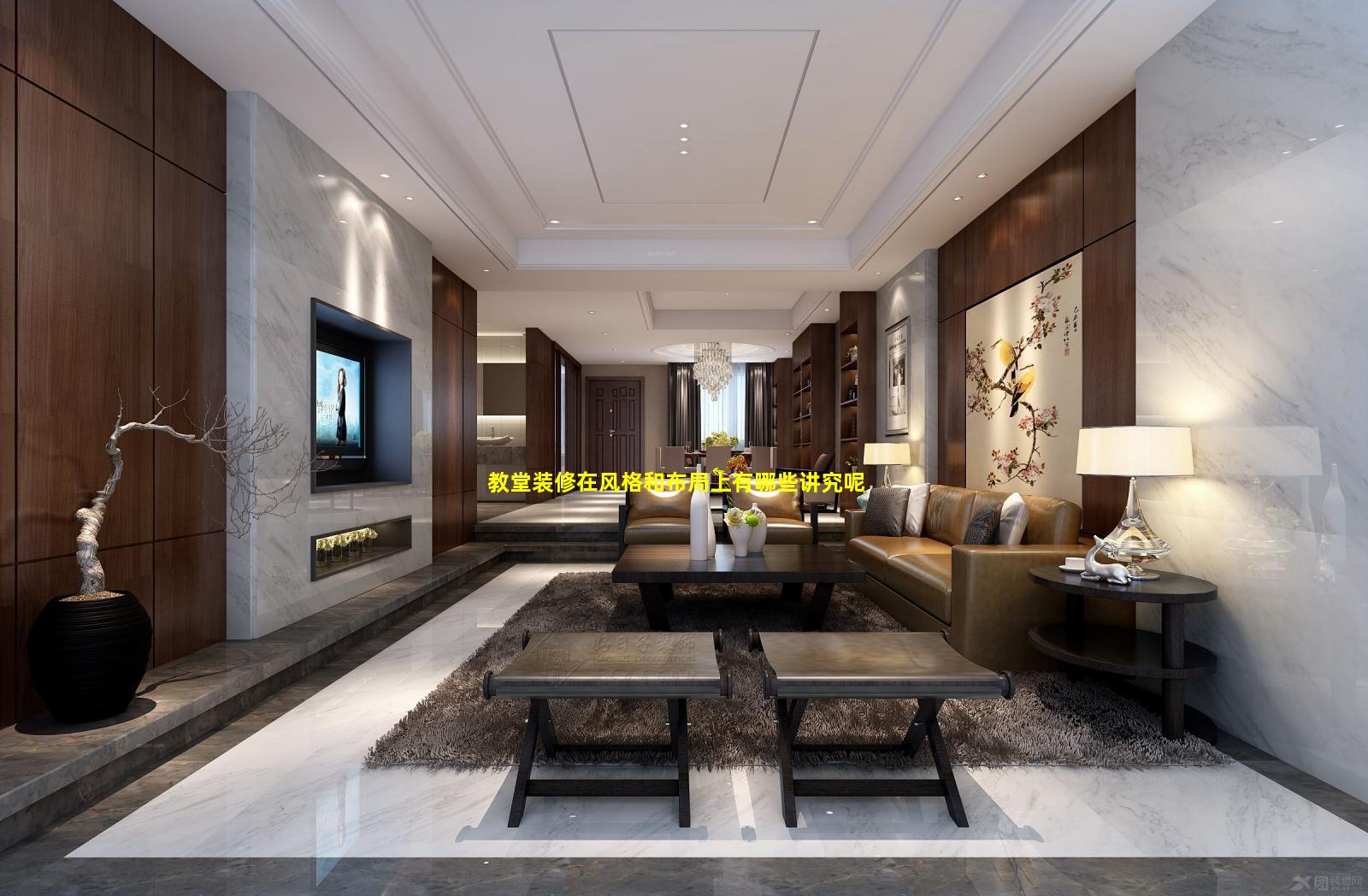





教堂装修风格
哥特式:高耸的尖顶、彩色玻璃窗、拱形天花板,营造出庄严神圣的氛围。
罗马式:厚重的石墙、圆形拱门、小窗户,给人以坚固稳重的感觉。
巴洛克式:华丽的装饰、曲线形线条、丰富的雕刻,展现出奢华和戏剧性。
新古典主义:对称、平衡、简洁的线条,强调理性与秩序。
现代式:使用玻璃、钢材和混凝土等现代材料,注重功能性和简约性。
教堂布局中殿:教堂的主体部分,通常是长方形或十字形,用于举行礼拜仪式。
圣坛:中殿的东端,是神职人员主持礼拜的地方,通常设有祭坛、十字架和圣经。
唱诗班席:位于圣坛两侧或中殿后方,供唱诗班演唱。
耳堂:中殿两侧的附属空间,可用于举行小型礼拜仪式或其他活动。
洗礼池:用于洗礼仪式,通常位于教堂入口附近。
钟楼:用于悬挂钟,召唤信徒参加礼拜。
尖顶:教堂顶部高耸的结构,具有象征意义,代表着与天堂的连接。
其他讲究色彩:教堂通常使用蓝色、绿色、红色等象征性的颜色,代表着不同的宗教意义。
光线:自然光和人工光线在教堂中扮演着重要角色,营造出神圣和庄严的氛围。
声学:教堂的声学设计至关重要,以确保礼拜仪式中的声音清晰度和共鸣效果。
家具:教堂的家具,如长椅、讲坛和祭坛,通常采用木质或其他耐用的材料,并具有宗教象征意义。
装饰:教堂的装饰品,如雕塑、绘画和挂毯,通常具有宗教主题,旨在激发信徒的灵性。
教堂装修风格
哥特式:尖拱、飞扶壁、彩绘玻璃窗,营造出庄严肃穆的气氛。
罗马式:圆拱、厚重墙壁、小窗户,给人以坚固感。
文艺复兴式:对称、和谐、古典元素,体现人文主义精神。
巴洛克式:华丽、繁复、戏剧性,强调光影效果。
新古典主义:简洁、优雅、对称,借鉴古典元素。
现代式:简洁、实用、功能性强,采用现代材料和技术。
教堂布局中殿:教堂的主体部分,供信徒聚集。
圣坛:祭祀和举行圣餐的地方,通常位于中殿的东端。
唱诗班席:供唱诗班演唱的地方,通常位于圣坛后面。
耳堂:中殿两侧的附属空间,可用于祈祷、忏悔或其他活动。
洗礼池:用于洗礼的容器,通常位于教堂入口附近。
钟楼:放置钟的塔楼,用于报时或召唤信徒。
尖顶:教堂顶部的尖塔,具有象征意义和美学价值。
其他讲究色彩:不同颜色具有不同的象征意义,如蓝色代表天堂,红色代表圣灵。
光线:自然光和人工光线都非常重要,营造出神圣和庄严的气氛。
装饰:雕塑、绘画、马赛克等装饰元素可以增强教堂的视觉效果。
声学:教堂的声学设计至关重要,确保声音清晰洪亮。
功能性:教堂应满足信徒的各种需求,如祈祷、礼拜、聚会等。

教堂装修风格
哥特式:高耸的尖顶、彩色玻璃窗、拱形天花板
罗马式:圆形拱门、厚重的墙壁、小窗户
文艺复兴式:对称、和谐、古典元素
巴洛克式:华丽、装饰性、曲线和漩涡
新古典主义:简洁、优雅、受古希腊和罗马建筑启发
现代式:简洁、功能性、使用现代材料
教堂布局中殿:教堂的主要部分,供会众使用
圣坛:神职人员进行礼拜的地方,通常位于中殿的东端
耳堂:中殿两侧的较小空间,用于祈祷或其他活动
唱诗班席:唱诗班表演的地方,通常位于圣坛后面
洗礼池:用于洗礼的容器,通常位于教堂入口附近
讲坛:牧师讲道的地方,通常位于中殿中央
祭衣间:神职人员准备礼拜的地方
钟楼:放置教堂钟的地方,通常位于教堂外
Church Decoration: Considerations for Style and Layout
The decoration of a church plays a significant role in creating a sacred and inspiring atmosphere for worship. Both the style and layout of the decoration should be carefully considered to enhance the spiritual experience of the congregation.
StyleThe architectural style of the church often influences the decorative style. For example, Gothic churches are typically characterized by pointed arches, ribbed vaults, and stained glass windows. The decoration of such churches often incorporates elements of medieval art, such as gargoyles, grotesques, and intricate carvings.
In contrast, Renaissance churches are known for their classical proportions, domes, and round arches. The decoration of these churches often features Renaissance art, such as paintings, sculptures, and frescoes.
Modern churches may adopt a more contemporary style, with clean lines, open spaces, and the use of modern materials. The decoration of these churches often focuses on simplicity and functionality, while still incorporating elements of sacred symbolism.
Layout
The layout of the church decoration should facilitate the flow of worship and create a sense of unity among the congregation. The following are some key considerations:
Altar: The altar is the focal point of the church, where the Eucharist is celebrated. It should be placed in a prominent position, visible to all members of the congregation.
Pulpit: The pulpit is where the preacher delivers the sermon. It should be located near the altar, but not so close as to distract from the celebration of the Eucharist.
Baptistry: The baptistry is where baptisms are performed. It should be located near the entrance of the church, as a symbol of the entry into the Christian community.
Nave: The nave is the main body of the church, where the congregation gathers for worship. It should be spacious and welllit, with comfortable seating.
Transepts: Transepts are the arms of the church that extend perpendicular to the nave. They can be used for additional seating or for chapels dedicated to specific saints or purposes.
Apse: The apse is the semicircular or polygonal recess at the east end of the church, which often houses the altar. It is typically decorated with elaborate mosaics or frescoes.
By carefully considering both the style and layout of the church decoration, it is possible to create a sacred space that enhances the worship experience and inspires the congregation.